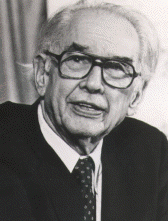Year: 2017
The Lovers (2017)
Hunt for the Wilderpeople (2016)
DroneThermal v3 Micro UAV Thermal Camera
http://www.flytron.com/thermal-cameras/303-dronethermal-micro-uav-thermal-camera.html
Convert $2 LED Lamp to $50 Smart Lamp: 16 Steps (with Pictures)
http://www.instructables.com/id/Convert-2-LED-Lamp-to-50-Smart-Lamp/
How to get analog audio out working?
John von Neumann
John von Neumann (/vɒn ˈnɔɪmən/; Hungarian: Neumann János Lajos, pronounced [ˈnɒjmɒn ˈjaːnoʃ ˈlɒjoʃ]; December 28, 1903 – February 8, 1957) was a Hungarian-American mathematician, physicist, inventor, computer scientist, and polymath. He made major contributions to a number of fields, including mathematics (foundations of mathematics, functional analysis, ergodic theory, representation theory, operator algebras, geometry, topology, and numerical analysis), physics (quantum mechanics, hydrodynamics, and quantum statistical mechanics), economics (game theory), computing (Von Neumann architecture, linear programming, self-replicating machines, stochastic computing), and statistics.
Léo Delibes
Colossus computer
Colossus was a set of computers developed by British codebreakers in 1943–1945 to help in thecryptanalysis of the Lorenz cipher. Colossus used thermionic valves (vacuum tubes) to performBoolean and counting operations. Colossus is thus regarded[2] as the world’s first programmable,electronic, digital computer, although it was programmed by switches and plugs and not by astored program
https://en.m.wikipedia.org/wiki/Colossus_computer
Atanasoff–Berry computer
The Atanasoff–Berry computer (ABC) was the first automatic electronic digital computer, an early electronic digital computing device that has remained somewhat obscure. The ABC’s priority is debated among historians of computer technology, because it was neitherprogrammable, nor Turing-complete.
Conceived in 1937, the machine was built byIowa State College mathematics and physics professor John Vincent Atanasoff with the help of graduate student Clifford Berry. It was designed only to solve systems of linear equations and was successfully tested in 1942. However, its intermediate result storage mechanism, a paper card writer/reader, was not perfected, and when John Vincent Atanasoff left Iowa State College for World War II assignments, work on the machine was discontinued.[2] The ABC pioneered important elements of modern computing, including binary arithmetic and electronic switching elements, but its special-purpose nature and lack of a changeable, stored program distinguish it from modern computers. The computer was designated an IEEE Milestone in 1990.
Atanasoff and Berry’s computer work was not widely known until it was rediscovered in the 1960s, amidst conflicting claims about the first instance of an electronic computer. At that timeENIAC, that had been created by John Mauchly and J. Presper Eckert, was considered to be the first computer in the modern sense, but in 1973 a U.S. District Court invalidated the ENIAC patent and concluded that the ENIAC inventors had derived the subject matter of the electronic digital computer from Atanasoff (see Patent dispute). When, in the mid-1970s, the secrecy surrounding the British World War II development of the Colossus computers that pre-dated ENIAC, was lifted and Colossus was described at a conference in Los Alamos, New Mexico in June 1976, John Mauchly and Konrad Zuse were reported to have been astonished.
https://en.m.wikipedia.org/wiki/Atanasoff%E2%80%93Berry_computer
John Vincent Atanasoff
John Vincent Atanasoff (October 4, 1903 – June 15, 1995) was an American physicist and inventor, best known for being credited with inventing the first electronic digital computer.
Atanasoff invented the first electronic digital computer in the 1930s at Iowa State College. Challenges to his claim were resolved in 1973 when the Honeywell v. Sperry Rand lawsuit ruled that Atanasoff was the inventor of the computer.[1][2][3][4] His special-purpose machine has come to be called the Atanasoff–Berry Computer.
